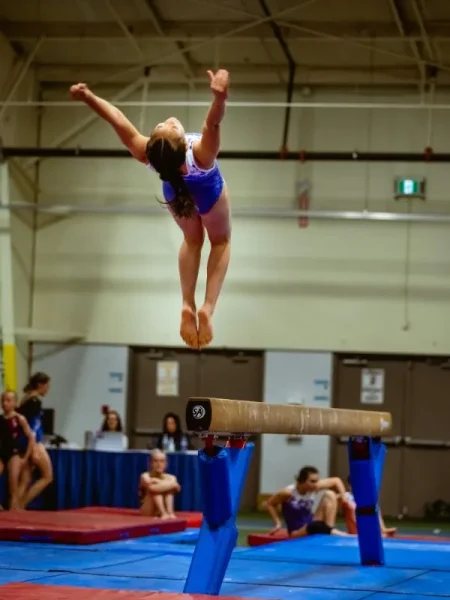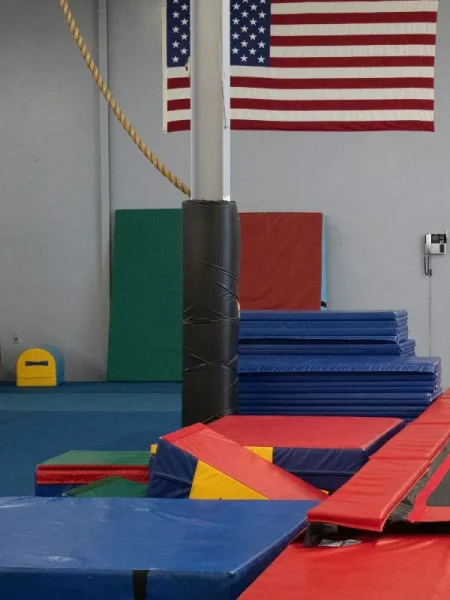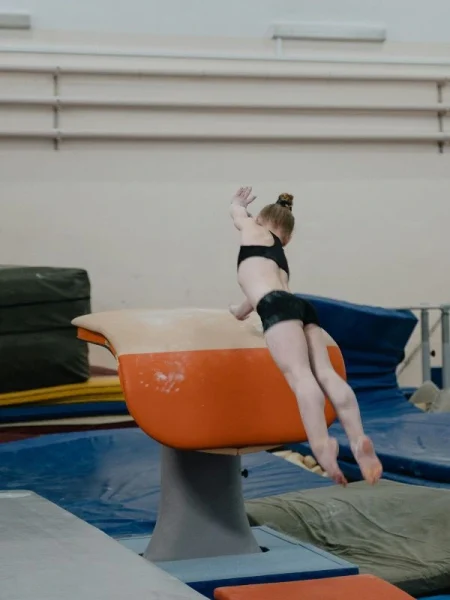Tumbling Equipment 101
The gear that catches you when you flip
First Things First – What Is Tumbling?
Tumbling is a style of acrobatic movement that includes flips, rolls, handsprings and more. Think gymnastic floor routines, cheerleading passes, parkour stunts or tricking. No equipment on the athlete – just movement, timing, strength and balance.
But the stuff they tumble on? That’s the game-changer. Good equipment gives you the confidence to go for it. Bad equipment? It’s a fast-track to injury – or at least frustration.
Tumbling Equipment
You’ve probably seen a gymnast flip through the air, twist mid-flight and somehow land perfectly – like it was easy. It’s not. But here’s a little secret: behind almost every smooth flip or clean cartwheel, there’s a quiet hero doing half the work. Tumbling equipment.
Let’s break it down. If you’re just getting started – or maybe just curious – this guide will walk you through the basics of tumbling gear, how it works and why it matters more than you think.
Mats: The Foundation of Everything
Let’s start simple.
Mats are the bread and butter of tumbling. If you’ve ever been inside a gym, dojo or dance studio, you’ve seen them. Thick, colorful rectangles. Velcro edges. Slight bounce. They seem boring – until they save your face during a back tuck attempt.
Here’s what you’ll find out there:
– Panel Mats: Foldable, firm, versatile. Great for basic drills or at-home practice.
– Crash Mats: Soft and thick, these are your go-to for high-impact landings or spotting new skills.
– Incline Mats (aka Wedges or Cheese Mats): Shaped like a ramp. Perfect for learning rolls, backbends or walkovers.
– Flexi-Roll Mats: Used in full-floor setups – soft on the knees, firm enough for flips.
Each mat serves a purpose. Think of them as different-sized safety nets. You wouldn’t bring a crash mat to a dance class – but you also wouldn’t learn back handsprings on hardwood. Know your surface.
Air Tracks: Tumbling Meets Tech
Now let’s talk about something with a little bounce.
Air tracks are inflatable tumbling mats – basically a long air mattress made for flipping. They’re popular in cheer, gymnastics, martial arts and yes, even TikTok stunt videos. They give just enough lift for power, but not so much you lose control.
What makes them so great?
– Portability: Deflate it, roll it up, toss it in your car.
– Bounce factor: Less harsh on the joints, great for repetition.
– Confidence booster: Beginners love the “cushion” of safety.
But heads up – they do feel different than spring floors or firm mats. You’ll need to adjust your technique a bit. That said, if you’re training at home or on the go, air tracks can be a game-changer.
Brands like AirTrack Factory, Tumbl Trak or FBSPORT make solid options, from kid-friendly models to full-length, pro-level tracks.



Spring Floors: The Professional Playground
Now, the holy grail: spring floors.
These are what you’ll find at competition-level gymnastics events or cheerleading meets. A layer of plywood, topped with foam and spring-loaded underneath. It’s like flipping on a trampoline without the bounce getting out of control.
Why are they so effective?
– They give just enough to boost height.
– They return energy as you land.
– They absorb impact to reduce injury risk.
The trick is: they’re not very portable. So, unless you’re training at a gym, you probably won’t have a spring floor at home. But once you’ve flipped on one? Hard surfaces just feel… mean.
Tumbling Blocks and Spotting Tools
Let’s take a minute for the weird-shaped stuff.
If you’ve walked into a gym and seen giant foam blocks, barrels or donut-shaped cushions, you might’ve wondered: “What are those even for?”
Turns out, they’re very useful.
Octagons: Help with back handsprings or walkovers by supporting body position.
Barrels and Donuts: Used to teach body control in rotations or transitions.
Handstand Blocks or Parallettes: For balance drills and upper body conditioning.
Resi Pits: Like a dense foam pit, used for practicing tough landings without fully crashing.
Think of this gear like training wheels. They’re temporary, yes – but incredibly helpful for building trust in your movement. And trust? That’s everything in tumbling.
What About Shoes? Or… Should You Be Barefoot?
Honestly? It depends.
Barefoot: Offers more grip and natural foot movement. Great for flexibility and control.
Tumbling Shoes: Lightweight, snug and protective – used in cheerleading and martial arts.
Socks? Don’t. Just don’t. Too slippery. Too dangerous.
Unless you’re doing performance work that requires a specific look or outfit, barefoot is usually the go-to for gymnastics-style tumbling.
Mental Equipment? That’s a Thing Too.
Let me explain.
No, it’s not foam or springs. But the mental side of tumbling – the ability to commit to a flip, stay calm mid-air, trust your body – that’s real equipment. And it needs training too.
This is why spotting, repetition and gradual progress matter. The brain freaks out when you tell it to jump backwards and spin. Equipment helps bridge the gap between fear and ability.
A well-placed mat or block says, “You’re safe. Try again.”
And when you feel safe, you learn faster.
At-Home Setups: What You Actually Need
So, let’s say you’re not joining a gym just yet. You want to start at home, safely. Here’s what makes sense:
– A panel mat or air track: Something soft but stable.
– A crash mat (if space allows): For flips or aerial work.
– Wedge mat: Great for beginners and stretching.
– Wall space or a handstand trainer: For balance drills.
Don’t get caught in the Instagram trap. You don’t need a fully-equipped gym in your garage. Just a few quality pieces, used consistently, can take you far.
And let’s be honest – if your living room becomes your personal tumble zone for a while, that’s kind of awesome.
Common Mistakes People Make with Tumbling Gear
A few things we have to mention, just to keep you from wasting time (or getting hurt):
– Buying too-soft mats: Sounds comfy, but it messes with technique.
– Skipping the warmup: Even the best mat can’t save cold muscles.
– Thinking more gear = more skill: Technique always comes first.
– Training on concrete: Just… why? Your spine deserves better.
Use the gear for what it’s meant for. Let it assist you – not replace the work.
Skill Progressions: Tumbling Equipment Grows With You
Here’s where things get cool. The same piece of tumbling equipment can evolve with your skills.
That wedge mat? Starts as a roll-helper. Later, it’s an elevated takeoff for advanced tricks.
That air track? Goes from soft landings to combo passes.
That crash mat? First it’s a security blanket – eventually, it’s where you test limits.
The gear doesn’t define your skill level. It grows with it.
Final Thoughts: It’s Not About the Gear, But It Kinda Is
Tumbling gear won’t do the flip for you. It can’t force technique or replace practice.
But it can give you the space to mess up safely. The courage to try again. The soft landing that makes failure less scary.
And honestly? That makes all the difference.
So, whether you’re buying your first mat, eyeing a spring floor setup or just figuring out what you need to get going – remember:
It’s not about having everything. It’s about having enough to take that first step… and maybe the second flip.
Ready to tumble?
Just keep your eyes up, your mind focused and your mat under you.
